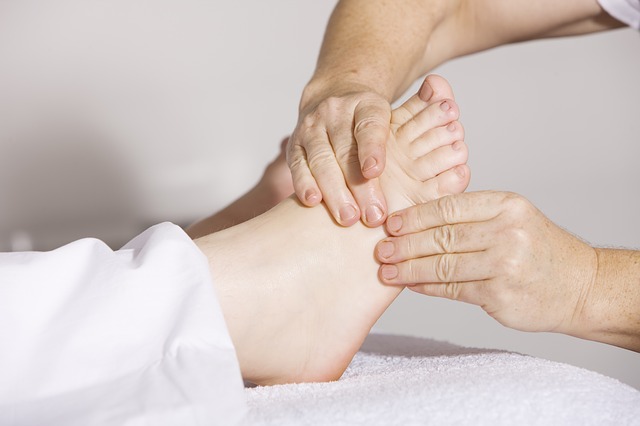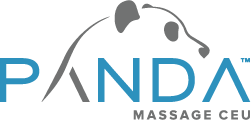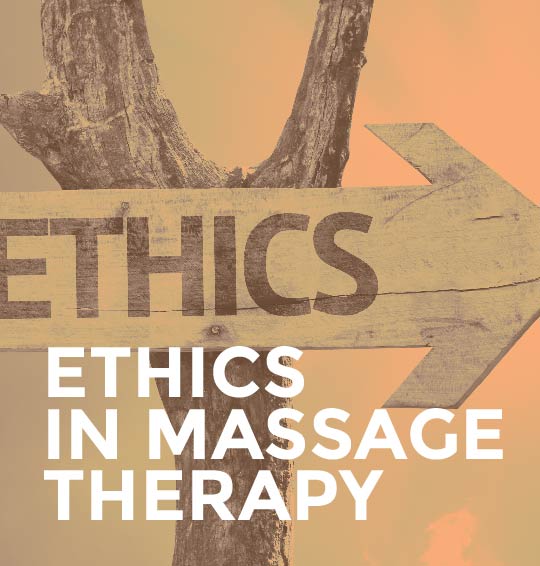Massage Ethics CEU Course – Outline and Learning Outcomes
As a massage therapist and professional bodyworker, your job is to provide your clients with the highest quality care possible. While attending a course of study, you learned about a wide range of techniques. Some are intended for relaxation and gentle manipulation; others are suited for accessing the deepest layers of a client’s musculature and facial tissue, seeking to relieve chronic conditions that they’ve been suffering from for years.
As part of your journey through the world of massage, you’ve had to combine your love of the healing arts and bodywork with a degree of business acumen as well. In addition to learning the ins and outs of various therapeutic modalities, you’ve also had to develop a business plan, start (or sometimes join) a practice, and bring in clients. You’ve likely had to market yourself, create a website, and jump through a number of hoops in order to really get started as a practitioner.
At the end of the day, though, there’s one overarching topic that has to be addressed in order for everything else to function smoothly in your massage practice. The foundational core of your practice isn’t a particular set of techniques, or the perfect marketing strategy that brings countless patients through the door.
Rather, the bottom line for your practice and the foundation upon which it has to be built is something different altogether: ethics.
Are you running an ethical practice? Do you have a deep awareness of what it means to act ethically in the field of bodywork?
In addition to a course in medical errors, an ethics CEU course is one of the required courses for practitioners. In many states, the state licensing board mandates a massage ethics course as an absolute requirement for all licensed practitioners.
If you’re ready to enroll in an ethics massage CEU course, look no further: you’ve found the right one.
Learning Objectives for Our Massage Ethics CEU Course

Ready to get started with our massage ethics continuing education course? We recognize that signing up for an online class is a big decision. You might still be unsure of whether or not this course is right for you. What can you expect from the program? Will you actually get anything out of it? Is it really the best expenditure of energy and commitment of time on your part, considering your hectic schedule as a busy massage therapist? We have the answers to these questions. Below, you’ll find an in-depth discussion of the course’s learning objectives.
After reading through the course’s learning outcomes, you’ll have a thorough understanding of what you can expect to gain from taking this class. In addition to this, though, you’re also obtaining information that will help you on your path as an adult learning. Perhaps you haven’t attended a formal educational program for a number of years. No need to worry: your desire to learn and level of focus will likely be higher than the average college student’s. Armed with an understanding of what you can expect from this course, you’ll be able to prepare yourself for the information that we’ll be discussing. This preparation will increase your retention of the material presented.
In terms of the big picture, our online massage ethics CEU class will discuss how to: determine whether or not ethical behavior is being used; understand the difference between morals, beliefs, and values; explain how morals, beliefs, and values relate to ethical behavior; follow best practices; and understand scope of practice and codes of ethics.
Specifically, after completing this program, you’ll have the ability to:
Determine the presence of ethical behavior
What is ethical behavior? How do we define it and understand it, particularly in terms of the profession? Are we acting ethically in our practice? Are our co-workers in the field doing the same? After completing this course, you’ll have a thorough understanding of what ethical behavior looks like, and you’ll be able to determine its presence or absence in a variety of professional environments.
Distinguish between beliefs, morals, and values
How do we talk about ethics, and what ethical behavior looks like? In order to have a detailed discussion about ethics, we first have to have a shared functional vocabulary. In this vein, it’s important to understand what beliefs, morals, and values are: where they overlap, how they differ, and what they mean for us in the world of massage ethics. In this class, we’ll examine each of these concepts in detail so that you can learn to distinguish between them.
Relate beliefs, morals, and values to ethical behavior
Once you have an understanding of what beliefs, morals, and values actually are, you’ll need to take one more step: you have to relate these concepts to ethical behavior. In this course, we’ll show you how.
Understand and adhere to best business practices in massage therapy
Every business and profession has its own set of best practices. Massage is no exception. In this program, we’ll begin by teaching you what best business practices look like in massage therapy. Once you understand them, we’ll discuss how to adhere to them in your own clinical setting.
Recognize the scope of practice, the standards of practice, and the code of ethics
Every healing modality has its own particular scope of practice, including massage. Recognizing and adhering to your scope of practice is essential to maintaining ethical behavior as a practitioner. Additionally, understanding standards of practice and keeping to a code of ethics are just as important. In this class, we’ll discuss all of these things in detail.
Course Outline

You now have an understanding of the learning outcomes for our online massage ethics CEU course. Still, though, you probably have a few lingering questions. How is the course structured? What’s covered in each of its sections? Do the instructors go into great detail, or just skim the surface? How does this class stack up against other online offerings?
We want you to feel confident in your decision to commit your hard-earned money, not to mention your time and energy, to our class. So, in this spirit, we’re including an extensive overview below of our massage ethics course in its entirety. Take some time to read through the outline, and you’ll develop an understanding of what the program covers. Be sure to note which areas are less familiar to you. This will help you prepare yourself for the class, which will improve your learning outcome.
Ethical Origins
What exactly do we mean by “ethics?” What are the origins of ethical concepts, and of ethics in general? This course will examine what exactly we mean by ethics, how we understand them, and how these topics relate to the practice of massage therapy. In order to do so, we’ll examine three important concepts: beliefs, values, and morals.
Beliefs
We all hold beliefs about certain things in our lives. But what do we really mean when we say that we “have a belief?” In this class, we’ll start by defining what exactly a belief is. With this in mind, we’ll look at how beliefs come together to form complex, interrelated belief systems. From there, we’ll examine the ways that belief systems influence our lives at the level of family, culture, environment, and more.
Values
What are values? How do our values and value systems relate to ethical behavior, particularly in the realm of massage therapy? In this program, we’ll examine what values mean to us, and how our value systems develop. Then, we’ll explore how values are shaped across the course of our lives (in childhood, throughout our youth, and into adulthood), and how they shape us in return. We’ll also examine the difference between personal and professional values, and why professional values are important to our massage therapy practice.
Morals
With an understanding of beliefs and values in hand, we can examine what morals are. What do we mean by the word moral? How do we define moral behavior? How are morals related to our and dependent upon our value systems? After completing this course, you’ll have a thorough understanding of the concept of morals and be able to apply this knowledge to ethical behavior.
Professional Ethics
How do beliefs, values, and morals come together to form what we term to be “professional ethics?” What are professional ethics? How do they function in our day-to-day lives as massage practitioners? In this class, we’ll answer these questions.
Ethics in Massage Therapy
While we can talk about ethics in general, we’re primarily concerned in this course with the ethics of massage therapy. What’s unique about professional ethics in the world of bodywork? How do we understand ethics in terms of our bodywork practice? After completing this program you’ll have the answers to these questions and more.
Power Differential
Power differentials exist across many different scenarios, professional and otherwise. In the world of massage, power differentials are an important consideration when attempting to hash out what ethical behavior looks like. In this course, we’ll explore the nature of a power differential in the practice of bodywork, and how to navigate this balance of power in an ethical manner.
Boundaries: Understanding and Maintaining
In any health care scenario, boundaries are important. They help distinguish what is and isn’t appropriate behavior between client or patient and provider. When it comes to a hands-on discipline like massage therapy, though, these boundaries are especially important to consider. In this class, we’ll examine how to maintain boundaries in our professional practice. Specifically, we’ll look at four types of boundaries: emotional, physical, sexual, and social.
Emotional Boundaries
Maintaining healthy and appropriate emotional boundaries between yourself and your client is an essential part of running an ethically sound massage practice. In this section, we’ll use a case study to examine what emotional boundaries should look like.
Physical Boundaries
Physical boundaries are incredibly important to ethical standards in massage therapy. As a highly physical field in the realm of health and wellness, maintaining these boundaries is essential. In this course, we’ll discuss physical boundaries and use another case study to help demonstrate how to handle challenging situations.
Sexual Boundaries
Considering the level of physical contact involved in the practice of massage, maintain sexual boundaries is an absolute necessity. As part of this program, you’ll learn about how to create and maintain these boundaries in your practice.
Social Boundaries
Over time, clients may begin to feel a social connection with their massage therapist. Keeping social boundaries in place, however, is essential to maintain an ethical and professional work environment. In this class, we’ll discuss how to set social boundaries and maintain them over the long haul.
Transference and Counter-Transference
Given the nature of massage therapy and bodywork, it’s possible for emotional and mental states coming from the client to impose themselves onto the therapist, and vice-versa. The former of these is called transference; the latter is counter-transference. Maintaining boundaries is essential in order to avoid transference, which has the potential to result in the breakdown the professional therapeutic relationship. In this course, you’ll learn how to avoid transference and counter-transference in your practice.
Client Boundaries
In addition to the professional boundaries that you seek to maintain as a massage therapist, it’s important to acknowledge and create space for your client’s boundaries as well. In this course, we’ll examine ways that you can identify and recognize client boundaries, including the interpretation of body language.
Body Language
A client’s body language can tell you a lot about how they’re feeling in a massage session. Many clients may not feel comfortable expressing something verbally; meanwhile, however, they body language can communicate what they’re having trouble articulating verbally. In this class, you’ll learn how to effectively interpret and respond to a client’s body language.
Communication
When it comes to maintaining ethical standards, clear communication with your clients is key. In this program, we’ll look at how to communicate with your clients effectively, beginning with their intake forms and continuing on as part of your follow-up and long-term practitioner-client relationship.
Educational Role
As a massage professional, your role in the practitioner-client relationship is as the educated party. It’s your job to recognize when you can and can’t offer them assistance. We’ll cover this in detail, focusing especially on scope of practice.
Scope of Practice
Clients often present their therapist with questions and concerns that lie outside of the therapist’s scope of practice. Ethical standards mandate that therapists acknowledge their limitations, rather than going beyond the scope of what they’re legally capable of treating. In this class, you’ll learn how to acknowledge and adhere to your scope of practice.
Codes of Ethics
In bringing all of this together, it’s helpful to examine the codes of ethics of various professional organizations. In this course, we’ll discuss the American Massage Therapy Association code of ethics, along with the codes upheld by the Associated Bodywork and Massage Professionals and the Alliance for Massage Therapy Education.
What are CEUs, and Why are They Important?
As a practitioner, you know how important it is to continue your education from year to year. Part of that happens every day in a professional setting: every therapeutic session is a learning opportunity. In addition, though, it’s necessary continue your education in a more traditional sense as well. If you’re wondering how to do this, we’re here to help. Massage CEUs, or Continuing Education Units (GUIDE TO LMT CONTINUING EDUCATION), are a great way to continue your education beyond your initial massage therapy program.
Keeping up with your education goes beyond professional development. In fact, most states mandate that all licensed therapists obtain a minimum required number of massage CEU hours each year (though these requirements are occasionally spread over the course of two or three years). Plus, if you’ve received an NCBTMB National Certification credential (NCBTMB GUIDE), you’ll need to receive a certain number of CEU hours every two years from an NCBTMB Approved Provider of qualified course hours.
As a proud NCBTMB Approved Provider, Panda Massage CEU™ offers courses that fulfill NCBTMB requirements. These courses also count towards your annual state licensing requirements.
Why Choose Panda Massage CEU?
What makes Panda Massage CEU the right choice for your continuing education needs?
Quality
We provide the highest quality CEU classes available anywhere, hands down.
Unique Topics
Other CEU providers only offer a limited range of courses. Panda Massage CEU offers a variety of unique and interesting topics, including hot stones, kinesiology, hydrotherapy, and more.
Professional Narration
Some online classes are poorly narrated, making them nearly impossible to follow. We ensure that all of our courses are professionally narrated.
Video Included
Some of our competitors offer programs without any video material, which makes for a challenging student experience. All of our courses include an accompanying video, which simulates an in-person learning experience.
Self-Paced
Massage therapists are busy people. We understand this, and that’s why all of our courses are self-paced. No matter your schedule, our courses can fit into your lifestyle.
Great Prices
Quality is important, but value is just as essential. That’s why we offer courses at an affordable price that works with any budget. And don’t forget: you’ll likely save hundreds, or even thousands, of dollars that you’d otherwise spend on travel for a traditional, in-person course.


There are no reviews yet.